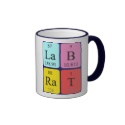|
|
Reference type: Journal
Authors: Prasad BB, Kumar D, Madhuri R, Tiwari MP
Article Title: Ascorbic acid imprinted polymer-modified graphite electrode: A diagnostic sensor for hypovitaminosis C at ultra trace ascorbic acid level.
Publication date: 2011
Journal: Sensors and Actuators B: Chemical
Volume: 160
Issue: (1)
Page numbers: 418-427.
DOI: 10.1016/j.snb.2011.08.003
Alternative URL: http://www.sciencedirect.com/science/article/pii/S092540051100726X
Abstract: A new kind of molecularly imprinted polymer-modified graphite electrode was fabricated by "grafting-to" approach, incorporating sol-gel technique, for the detection of acute deficiency in serum ascorbic acid level (SAAL), manifesting hypovitaminosis C. The modified electrode exhibited ascorbic acid (AA) oxidation at less positive potential (0.0 V) than the earlier reported methods, resulting in a limit of detection as low as 6.13 ng mL-1 (RSD = 1.2%, S/N = 3). The diffusion coefficient (1.096 x 10-5 cm2 s-1), rate constant (7.308 s-1), and Gibb's free energy change (-12.59 kJ mol-1) due to analyte adsorption, were also calculated to explore the kinetics of AA oxidation. The proposed sensor was found to enhance sensitivity substantially so as to detect ultra trace level of AA in the presence of other biologically important compounds (dopamine, uric acid, etc.), without any cross interference and matrix complications from biological fluids and pharmaceutical samples
Template and target information: ascorbic acid, AA
Author keywords: ascorbic acid, Differential pulse anodic striping voltammetry, molecularly imprinted polymer, sol-gel, "Grafting-to" approach
|


 Lab rat periodic table name tote bag
Lab rat periodic table name tote bag







 Lab rat periodic table name mug
Lab rat periodic table name mug







 Lab hunk periodic table name shirt
Lab hunk periodic table name shirt






